While spending a week in Prescott Valley (near Sedona), we headed the short distance northeast to spend the day in the Cottonwood area.
Our first stop was Tuzigoot National Monument, a pueblo that was lived in by the Sinagua people from the 1100s to 1400s, but which was only excavated in the 1930s.
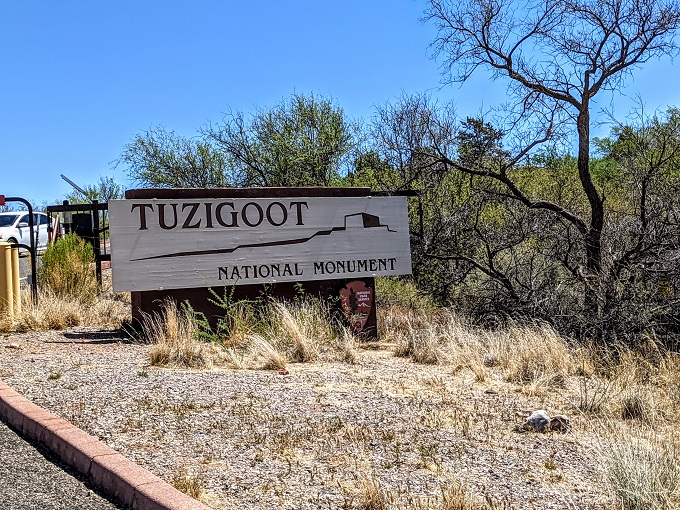
Tuzigoot National Monument is part of the National Park Service, so if you have a National Parks Passport you can get it stamped inside the visitor center.
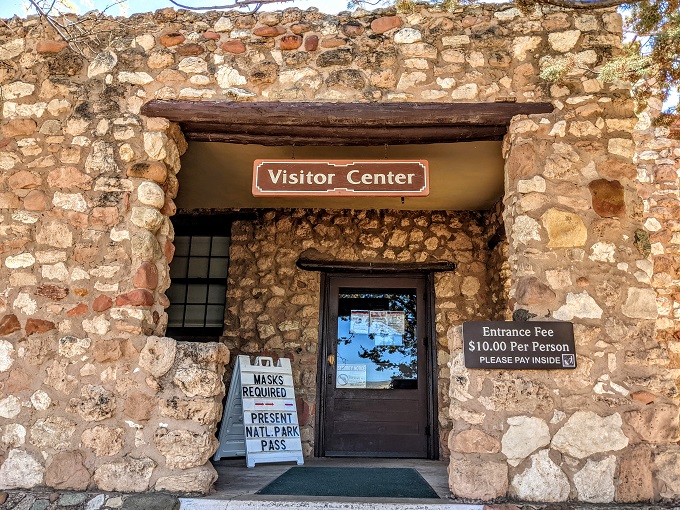
We explored Tuzigoot first and then spent some time inside the visitor center afterwards to look at the artifacts and learn more about the site’s history. In hindsight, I’d recommend wandering around the visitor center first so that when you explore Tuzigoot you’ll have an even better idea of what you’re looking at.
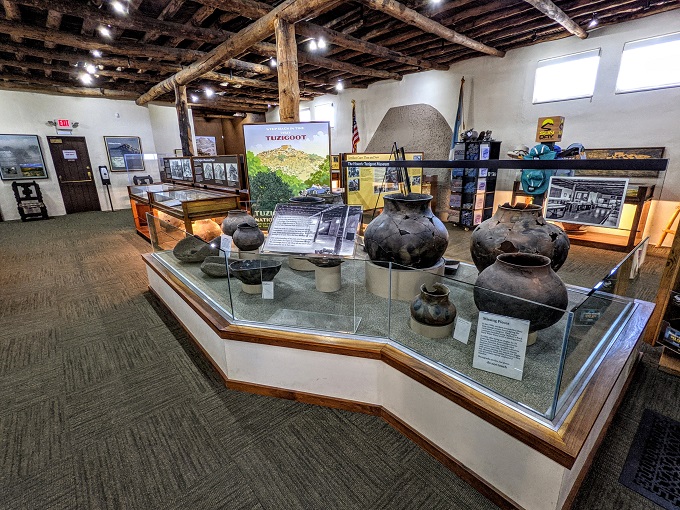
Thankfully photography was around by the time the excavation happened (1933-1935) because it meant they were able to record the various stages of the process.
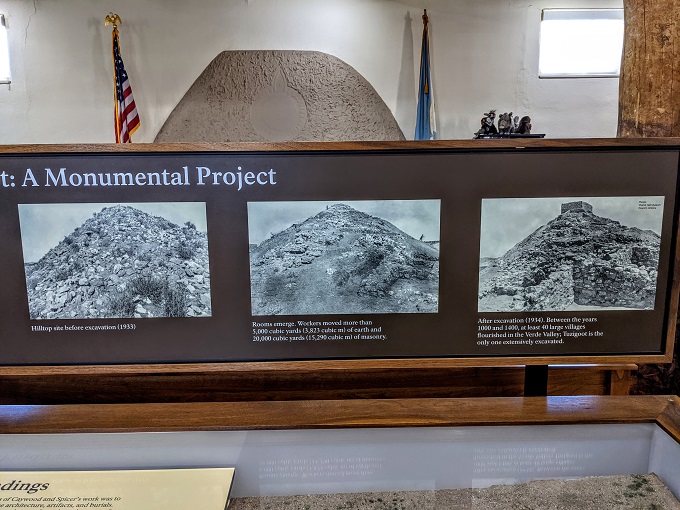
The excavation unearthed all kinds of artifacts including pottery, tools, bowls and more.
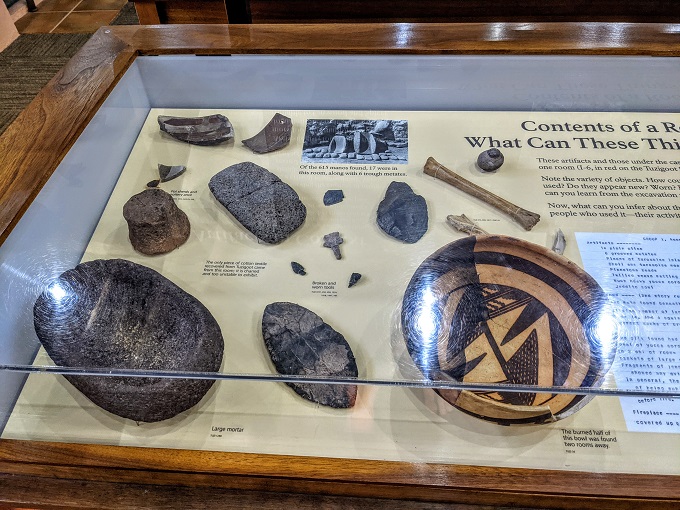
Through subsequent research at the site, archaeologists determined that the 110 room pueblo was constructed in various stages over the course of hundreds of years.
As can be seen in the photo below, a small section of the building was constructed in the 1100s (the section in blue). Many more rooms were added in the 1200s (yellow), with the site seemingly doubling in size in the 1300s.
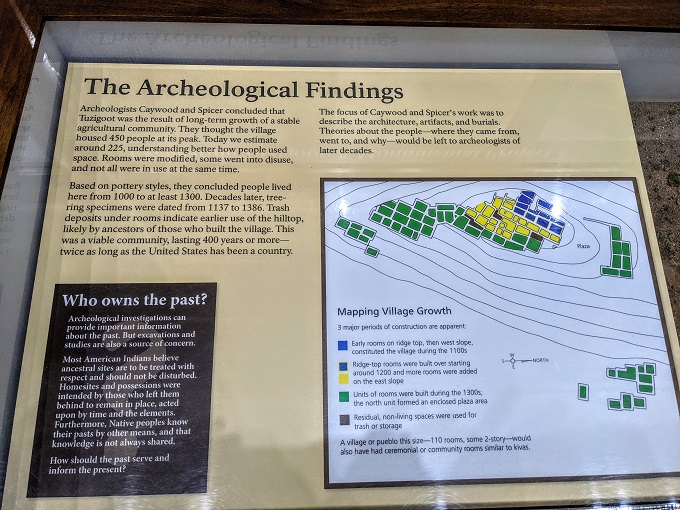
From the visitor center it’s a short walk up a paved path to get to Tuzigoot.
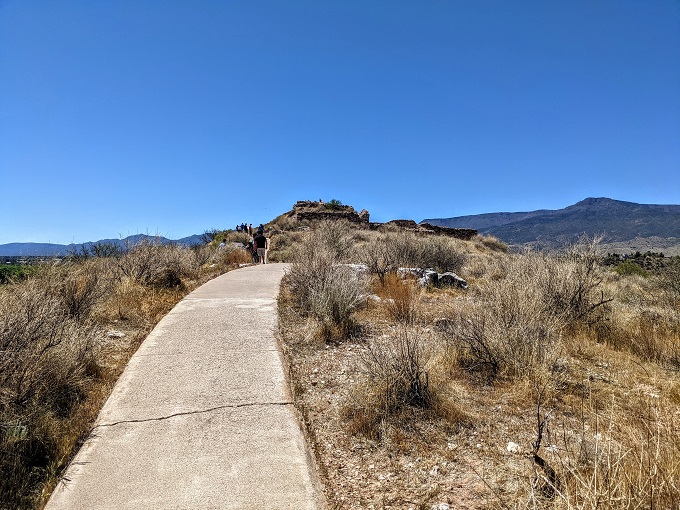
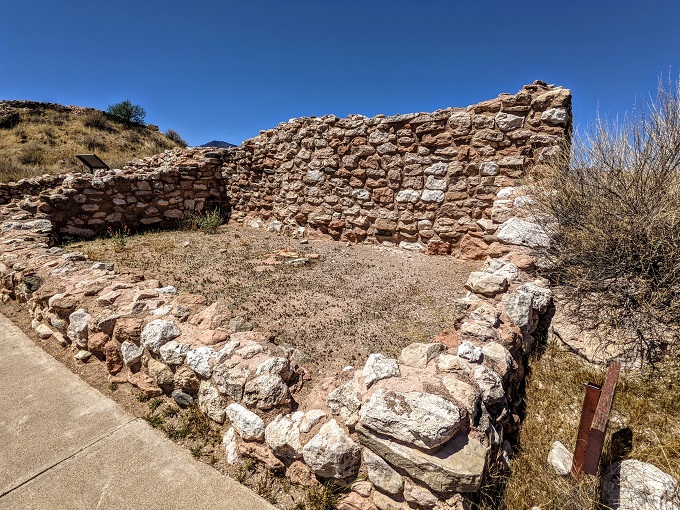
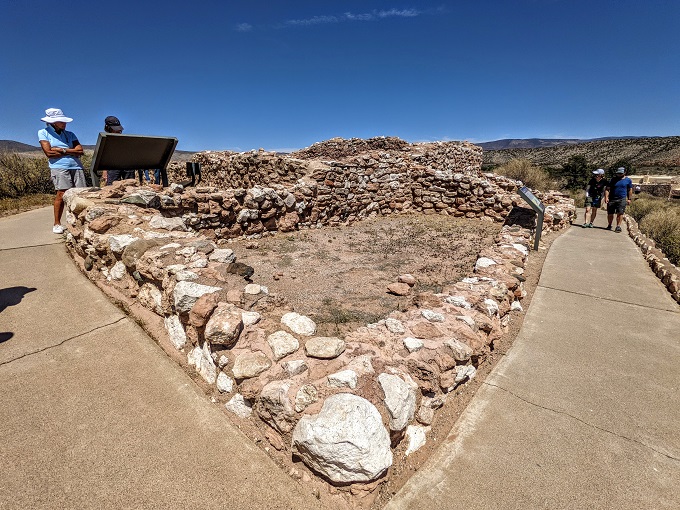
Tuzigoot was constructed using large boulders as foundations. River stones and limestone blocks were stacked with up to 3-4 inches of mud mortar separating them, resulting in at least half of each wall consisting of mortar.
The mortar started eroding after the Sinagua people moved on from Tuzigoot in the 1400s. That led to roofs and walls collapsing which is the reason only some sections of the walls now remain.
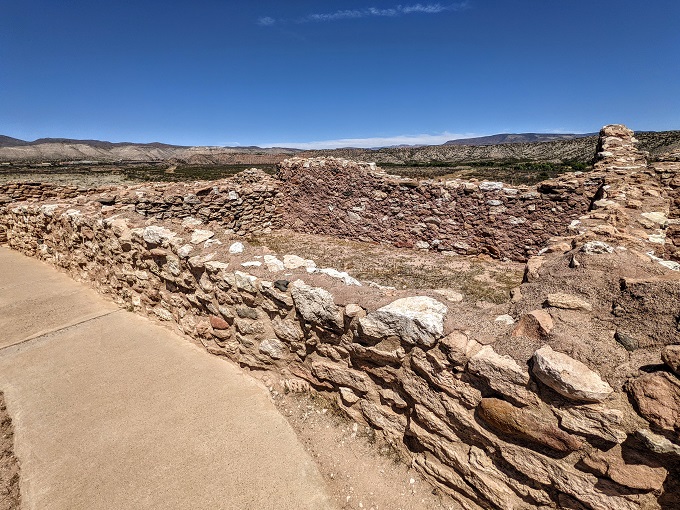
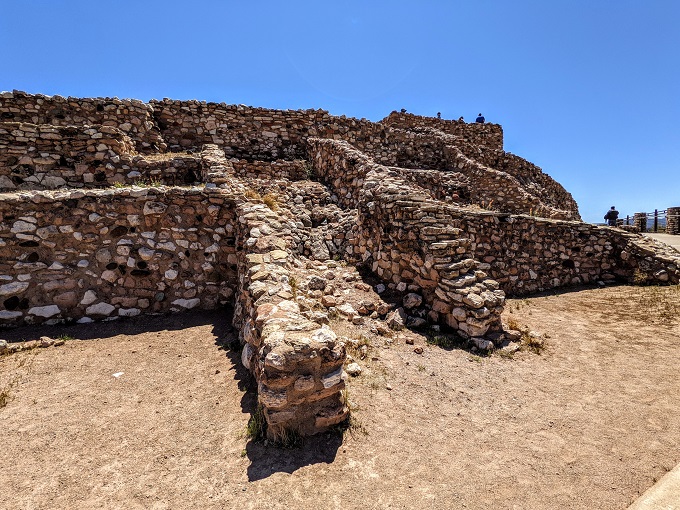
Following excavation some of the rooms were reconstructed. Nowadays the National Park Service has a policy of not reconstructing buildings such as these – they’ll only stabilize them.
Due to past efforts though, it’s possible to walk inside Tuzigoot and head up some stairs to look at the site from above.

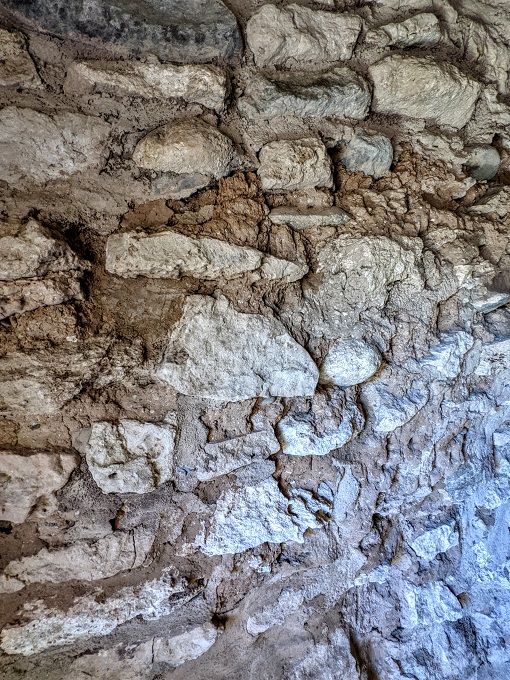
From up top you get a better idea of quite how large Tuzigoot was.
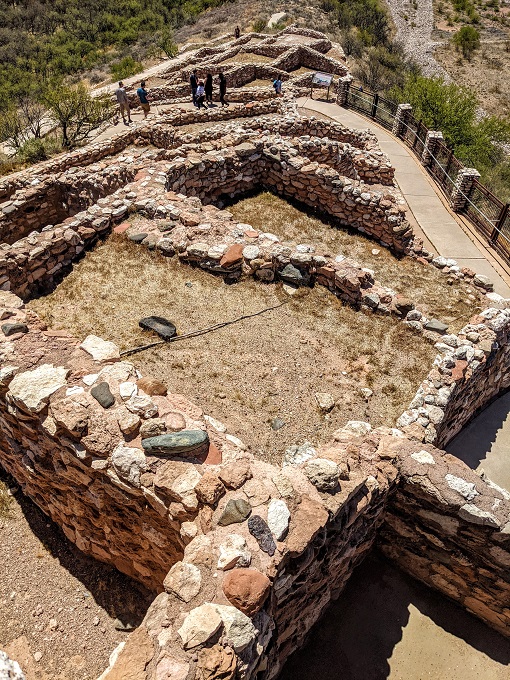
After viewing Tuzigoot from on high, we continued walking around the base of the building.
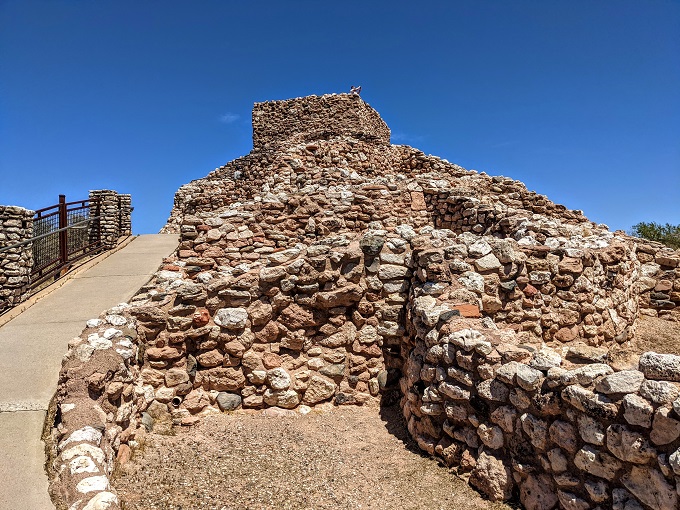
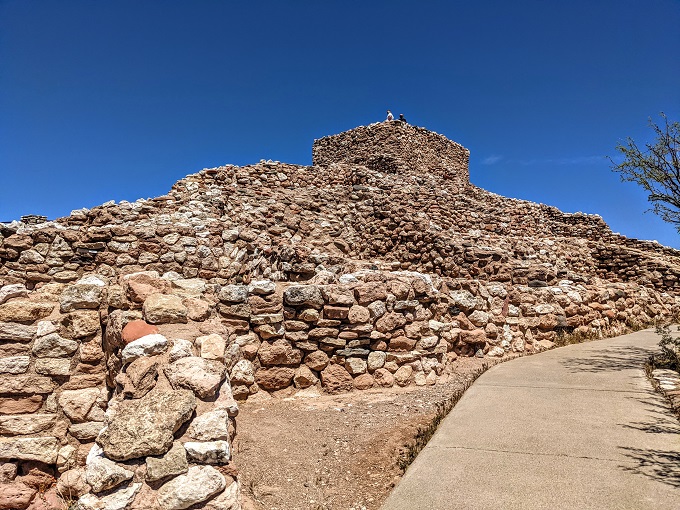
It’s not known what caused the Sinagua people to move on from the site in the 1400s. A similar kind of thing happened with Ancestral Puebloans in the 1300s-1400s in New Mexico at Chaco Culture National Historical Park, Aztec Ruins National Monument and Bandelier National Monument.
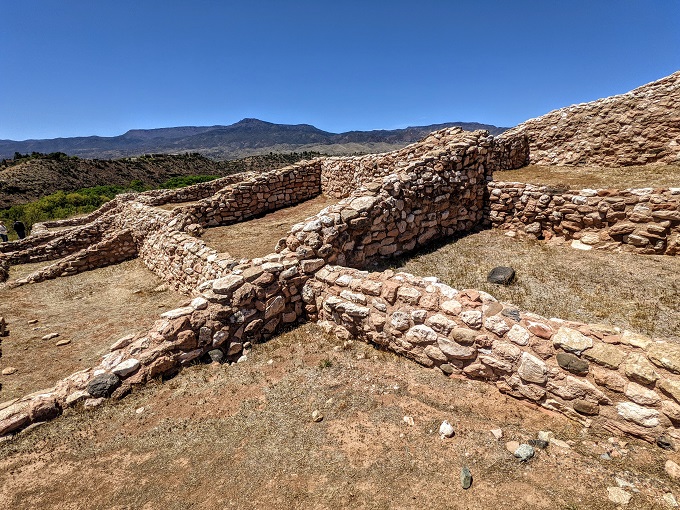
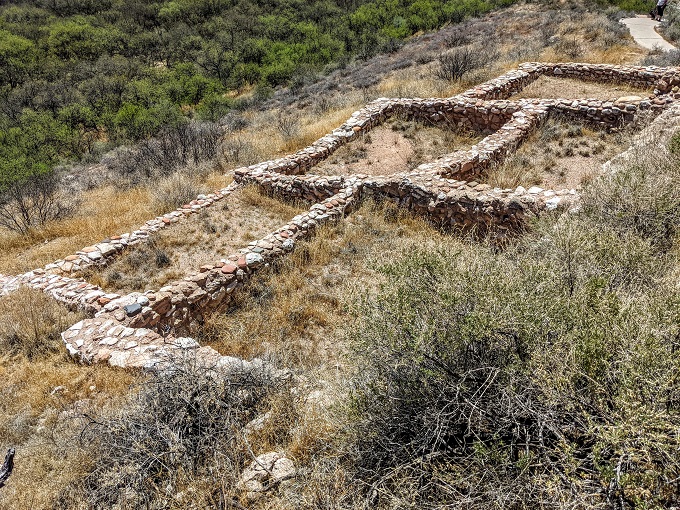
How Long Does It Take To Visit Tuzigoot National Monument?
We spent about 45 minutes at Tuzigoot, but you could certainly spend longer there if you wanted to look at all the exhibits and read all the information in the visitor center.
Is Tuzigoot National Monument Pet-Friendly?
Yes, Tuzigoot is pet-friendly provided they’re kept on a leash which meant that Truffles got to walk around with us.

How Much Does It Cost To Visit?
The entry fee for Tuzigoot National Monument is $10 per person for everyone ages 16+, with entry being free for anyone ages 15 and under. That $10 fee is a seven day pass and also includes entrance to the somewhat nearby Montezuma Castle National Monument.
Seeing as it’s a National Monument and is run by the National Park Service, entry is free if you have a National Parks pass. That’s valid for up to four people which was perfect for us because we have an annual pass and there were four of us in our group, meaning we didn’t have to pay anything extra to visit.
Where Is Tuzigoot National Monument?
Tuzigoot National Monument is in central Arizona. It’s about two hours north of Phoenix, 35 minutes southwest of Sedona, about 1.25 hours southwest of Flagstaff and about 10-15 minutes from both Cottonwood and Jerome. Montezuma Castle – the other location you can visit with your entrance fee – is about 40 minutes away.
Leave a Reply